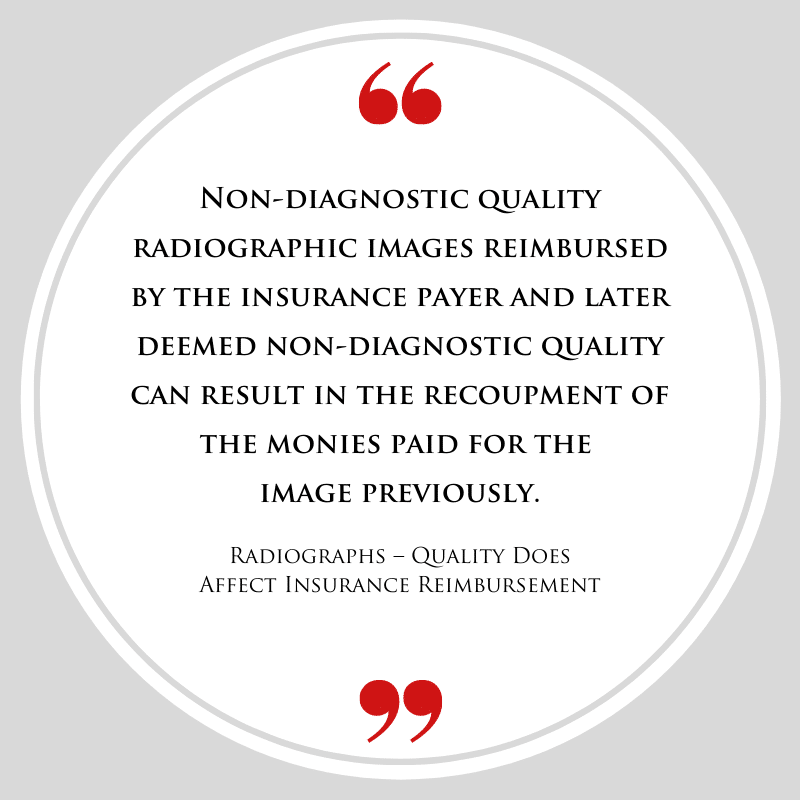Radiographs – Quality Does Affect Insurance Reimbursement


Xrays Affect Dental Insurance Reimbursement
Quality dental radiographic images are essential for accurately diagnosing and treatment planning. However, some dental radiographs may be considered of non-diagnostic quality even when combined with what is seen clinically, a definite diagnosis may be confirmed. From an insurance reimbursement point of view, if the image is not of diagnostic quality, the service is subject to denial. Dental consultants reviewing your claims do want to approve reimbursement of your claims; however, they face the challenging task of approving based on the documentation submitted with the claim. There are a few steps that can be taken to reduce claim denials due to lack of quality radiographic images.
The dental radiographic image is one of many supporting pieces of documentation included in the patient record and is used to prove dental necessity. The most effective way to attach radiographs to a claim is via electronic attachment of digital images. Mailed images should be printed on high-quality photo paper and use a high-quality photo printer. When the payer receives hard copy claims and images, the hard copies are scanned into the software and forwarded to the reviewing consultant. Often the image is of non-diagnostic quality by the time it reaches the consultant. It is often helpful to mark up a radiograph to show bone levels, areas of decay, add any additional notes to the mark up to more fully describe the area being treated. This markup showing what is communicated in the narrative helps paint the picture necessary to prove dental necessity. An image printed on copy paper is not the same quality as what a dentist viewed to diagnose and treatment plan; therefore, avoid printing radiographic images on copy paper. Avoid folding a printed image as the fold crease can be just where the consultant needs to see the image for claim approval.
Non-diagnostic quality radiographic images reimbursed by the insurance payer and later deemed non-diagnostic quality can result in the recoupment of the monies paid for the image previously. For example, a periapical image taken at the hygiene visit to diagnose the need for a crown is submitted and reimbursed. The subsequent crown claim is sent with the periapical image attached. The practice then receives a refund request for the periapical previously reimbursed with the reason stated “non-diagnostic quality” because the image did not capture the top of the crown to the apex of the tooth or perhaps was cone cut cutting off part of the tooth. In addition to the possibility of the crown claim denied, there may be recoupment of monies.
Conclusion
Work with your team to ensure they capture quality images regardless of insurance involvement. Be aware of any financial implications when a radiographic image is deemed non-diagnostic quality by an insurance payer.
Author: Dilaine Gloege, CDA, CPC
Related Posts
Dental revenue resources from Dental Claim Support
.png)